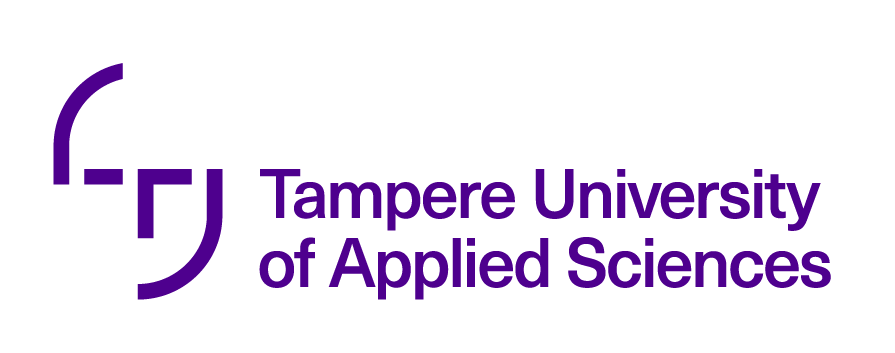Smart Textile Materials and Advanced Technical Fibers (5 cr)
Code: 5M00FX39-3001
General information
Enrolment period
22.11.2023 - 12.01.2024
Timing
01.01.2024 - 30.04.2024
Credits
5 op
Mode of delivery
Contact teaching
Unit
Textile and Material Engineering
Campus
TAMK Main Campus
Teaching languages
- English
Seats
10 - 25
Degree programmes
- Cross-study in the Tampere Universities Community
- Bachelor's Degree Programme in Textile and Material Engineering
- Open University of Applied Sciences
Teachers
- Marja Rissanen
- Minna Varheenmaa
Person in charge
Marja Rissanen
Groups
-
22TEMA
Objectives (course unit)
The student understands what smart textiles and garments are, what their properties are and what kind of technologies are required for produce them.
The student can explain the smart textile product applications area in health care, in active sports and work wear.
The students knows the most common high performance fibers used in smart textiles
Content (course unit)
Smart textiles and applications
Phase change materials, shape memory materials, chromic materials, conductive materials.
High performance fibres: manufacture of optical, plastic-optical, electrically conductive and metrological fibres.
Testing and standardization
Assessment criteria, satisfactory (1-2) (course unit)
Knowing: The student knows the basics of smart textiles and the main application areas on a general level. The students is aware of what high technology fibers are and what kind of technologies is used in smart textiles.
Acting: The student manages the assigned tasks under supervision/assistance.
Being: The student is a little bit motivated, takes his/her responsibility for studying and is capable of working in a group. The student can give and take feedback.
Assessment criteria, good (3-4) (course unit)
Knowing: The student can explain well the basics of smart textiles and the main application areas. The students understands what high technology fibers are and what kind of technologies is used in smart textiles on more advanced level.
Acting: The student applies substance matter learnt in previous studies, makes a plan/plans before carrying out tasks, limits tasks/problems to have an appropriate scope, solves problems.
Being: The student can give and receive feedback actively and constructively, can cooperate responsibly and is ready to develop his/her interaction skills. The student recognizes and follows the important courses of action in the field. The student takes responsibility and commits to the group activities in addition to his/her own work
Assessment criteria, excellent (5) (course unit)
Knowing: The student knows widely the technology of smart textiles and the diverse application areas of them. The student has extensive knowledge about high technology fibers and what kind of technologies is used in smart textiles.
Acting: The student can search for diverse solution alternatives, justify his/her choices, assesses new solution alternatives, combines solution alternatives creatively or creates new ones.
Being: The student can cooperate responsibly, flexibly and constructively, develops his/her own and the group's interaction, works responsibly and in a committed manner considering the community and field requirements and needs.
Location and time
Period 3 and 4
on site in Kauppi campus
Exam schedules
Given separately in Moodle
Assessment methods and criteria
Exam and group works
Assessment scale
0-5
Teaching methods
Lectures, discussions, group works, company visits and visiting lectures
Learning materials
Lecture material in Moodle
Literature:
- Shahinpoor, M. (2020). Fundamentals of Smart Materials. Royal Society of Chemistry (RSC).
- McCann, J. & Bryson, D (2023). Smart Clothes and Wearable Technology (2nd Edition). Elsevier.
- Tao, X. (2015) Handbook of Smart Textiles. Springer.
- Bhat, G. (2017). Structure and Properties of High-Performance Fibers. Elsevier.
Student workload
5 credits: 133 working hours
Contact teaching: 50 hours (lectures, exercises, visits)
Independent learning: 83 hours
Practical training and working life cooperation
Company visits and visiting lectures
Assessment criteria - fail (0) (Not in use, Look at the Assessment criteria above)
Exam: failed
Group works: not returned in the given timetable
Assessment criteria - satisfactory (1-2) (Not in use, Look at the Assessment criteria above)
Knowing: The student knows the basics of smart textiles and the main application areas on a general level. The students is aware of what high technology fibers are and what kind of technologies is used in smart textiles.
Acting: The student manages the assigned tasks under supervision/assistance.
Being: The student is a little bit motivated, takes his/her responsibility for studying and is capable of working in a group. The student can give and take feedback.
Assessment criteria - good (3-4) (Not in use, Look at the Assessment criteria above)
Knowing: The student can explain well the basics of smart textiles and the main application areas. The students understands what high technology fibers are and what kind of technologies is used in smart textiles on more advanced level.
Acting: The student applies substance matter learnt in previous studies, makes a plan/plans before carrying out tasks, limits tasks/problems to have an appropriate scope, solves problems.
Being: The student can give and receive feedback actively and constructively, can cooperate responsibly and is ready to develop his/her interaction skills. The student recognizes and follows the important courses of action in the field. The student takes responsibility and commits to the group activities in addition to his/her own work
Assessment criteria - excellent (5) (Not in use, Look at the Assessment criteria above)
Knowing: The student knows widely the technology of smart textiles and the diverse application areas of them. The student has extensive knowledge about high technology fibers and what kind of technologies is used in smart textiles.
Acting: The student can search for diverse solution alternatives, justify his/her choices, assesses new solution alternatives, combines solution alternatives creatively or creates new ones.
Being: The student can cooperate responsibly, flexibly and constructively, develops his/her own and the group's interaction, works responsibly and in a committed manner considering the community and field requirements and needs.
